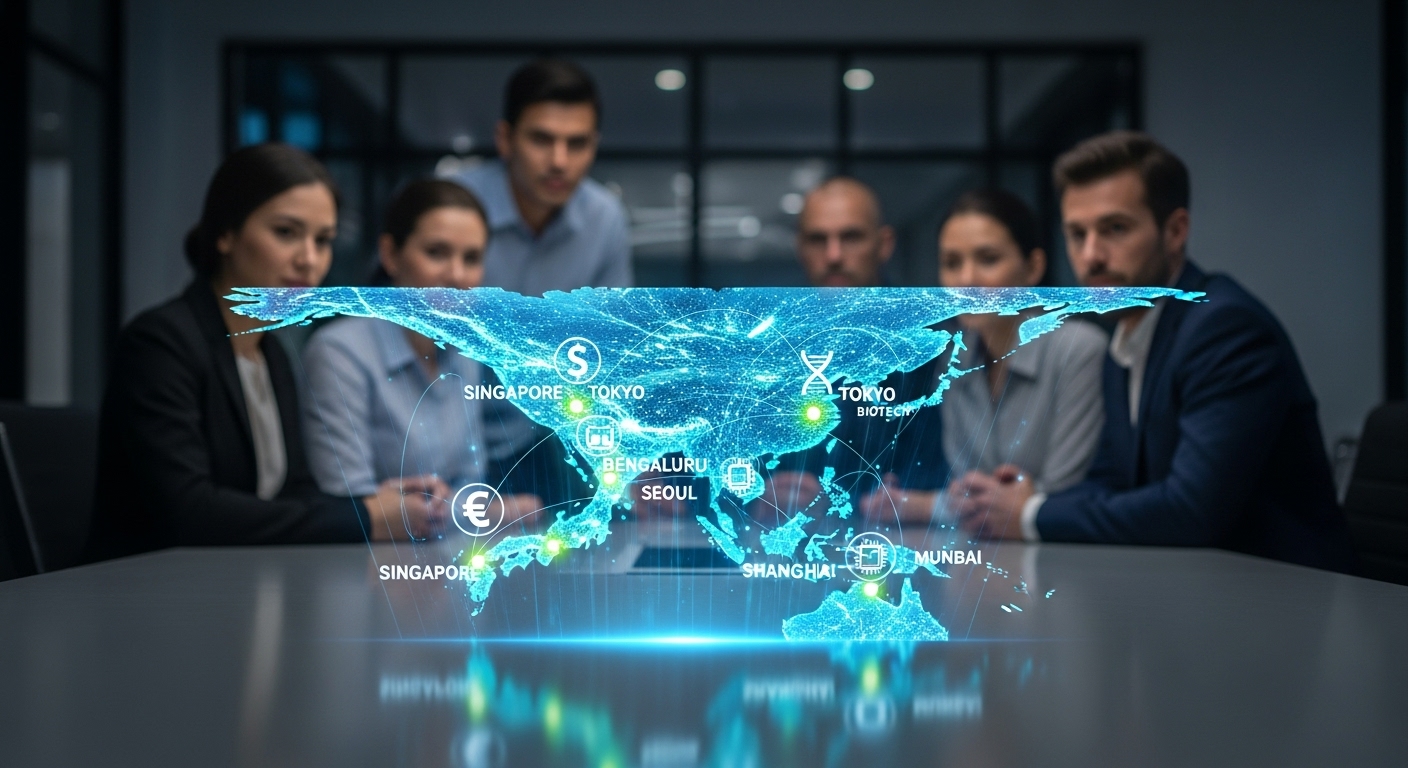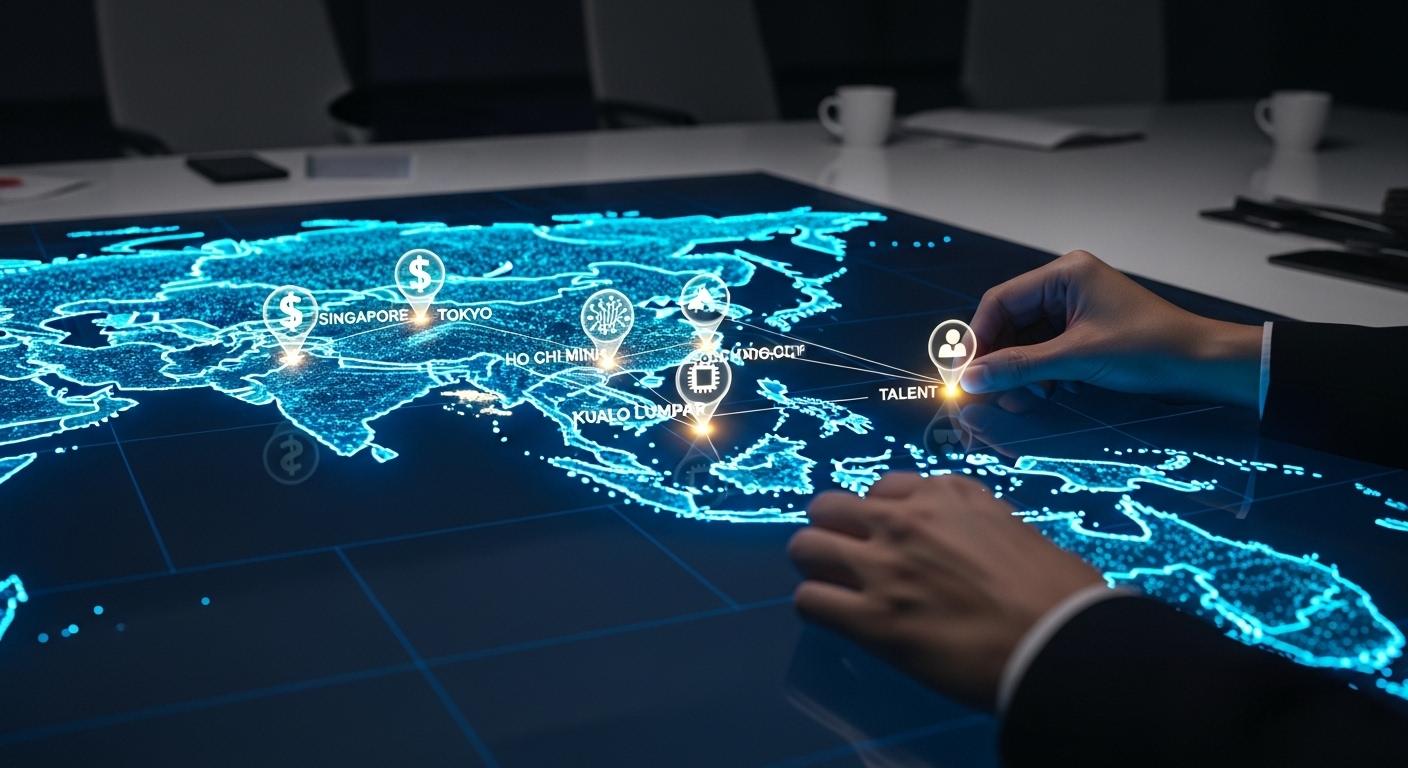The Asia-Pacific region is no longer a monolith defined by a few dominant capitals. Instead, it has evolved into a complex, interconnected grid of specialized hubs, each cultivating a unique ecosystem of talent, capital, and innovation. For global businesses, the old playbook of establishing a single regional headquarters is becoming obsolete. Real success in today’s APAC landscape requires a more nuanced, polycentric approach—a strategic alignment of specific business functions with the cities that excel in them. Recent analysis shows a significant diversification of foreign direct investment beyond traditional centers, flowing into emerging hubs renowned for specific sectoral strengths. This shift is driven by a quest for resilience, access to specialized talent pools, and the need to tap into hyper-local market dynamics. This article moves beyond a general overview to provide a strategic grid, mapping key business sectors like fintech, deep tech, life sciences, and advanced manufacturing to their corresponding power centers across the Asia-Pacific. We will explore how to leverage this specialized grid to build a more robust, efficient, and competitive regional footprint.
Singapore: The Convergent Hub for Finance, Greentech, and Digital Trust
Singapore has masterfully cemented its position as the undisputed financial nerve center of Southeast Asia, but its evolution hasn’t stopped there. The city-state now stands at the convergence of finance, sustainable technology (Greentech), and digital governance, creating a unique and powerful ecosystem for global businesses. Its robust regulatory framework, overseen by the Monetary Authority of Singapore (MAS), provides the stability and predictability that financial institutions crave. Initiatives like the MAS FinTech Regulatory Sandbox allow companies to experiment with innovative financial products and services in a controlled environment, attracting a dense concentration of fintech startups, venture capitalists, and established banks. This has created a virtuous cycle of investment and innovation, making it the premier destination for any company’s regional treasury, M&A, or financial services operations. Beyond traditional finance, Singapore is aggressively pursuing its Green Plan 2030, which aims to transform the nation into a global hub for green finance and carbon trading. This government-led push is attracting significant investment into sustainable infrastructure, renewable energy projects, and cleantech R&D. Companies focused on ESG (Environmental, Social, and Governance) goals will find Singapore’s ecosystem, complete with green bonds and sustainable investment funds, incredibly fertile ground. Tying this all together is an unwavering commitment to digital trust. With some of the world’s most advanced cybersecurity infrastructure and stringent data privacy laws, Singapore offers a secure base for companies managing sensitive regional data, making it an ideal location for data centers and regional security operations.
Tokyo & Seoul: Titans of Deep Tech and Precision Manufacturing
While newer hubs capture headlines, the established powerhouses of Tokyo and Seoul continue to dominate the high-stakes world of deep tech and advanced manufacturing. Their strength lies in a deep-rooted legacy of industrial excellence, massive R&D investment, and a highly skilled workforce dedicated to precision and quality. Tokyo, the heart of the world’s third-largest economy, remains a global leader in robotics, automation, and high-precision optics. Japanese corporations are at the forefront of creating the sophisticated machinery that powers global supply chains. For businesses in semiconductors, industrial automation, or automotive technology, a presence in the Greater Tokyo Area provides unparalleled access to world-class suppliers, research institutes like RIKEN, and a culture of ‘monozukuri’—the Japanese principle of exquisite craftsmanship in production. This environment fosters incremental, yet profound, innovation that is difficult to replicate elsewhere. Similarly, Seoul represents the pinnacle of technological prowess in semiconductors, consumer electronics, and telecommunications. Home to global giants like Samsung and SK Hynix, South Korea is a critical node in the global tech supply chain. The country consistently ranks among the highest in the world for R&D expenditure as a percentage of GDP. This investment fuels relentless innovation in memory chips, OLED displays, and 5G technology. For companies needing to be at the cutting edge of hardware development or seeking partnerships with electronic manufacturing leaders, Seoul is an essential hub. The synergy between its large conglomerates (chaebols) and a vibrant startup scene also creates a dynamic environment for B2B tech solutions and advanced materials science.
Bengaluru & Jakarta: Powering the Global Digital Consumer Wave
The future of the digital economy is being written in South and Southeast Asia, with Bengaluru and Jakarta as its twin capitals. These hubs are characterized by their massive, young, and increasingly affluent populations who are mobile-first and voraciously adopting new digital services. Bengaluru, often called the “Silicon Valley of India,” is an undisputed global IT and software development juggernaut. It boasts the highest concentration of tech talent in India, with millions of engineers and developers working for both multinational corporations and a thriving ecosystem of homegrown unicorns. This makes it the go-to destination for companies looking to build out large-scale software engineering teams, R&D centers, and back-office IT operations. The city’s influence extends beyond services into product innovation, particularly in enterprise SaaS, e-commerce, and fintech solutions tailored for emerging markets. Its deep talent pool and relatively low operational costs provide a powerful combination for scaling digital products globally. On the other hand, Jakarta is the gateway to Indonesia, the fourth most populous country in the world and one of the fastest-growing internet economies. The story here is one of immense market opportunity. With over 200 million internet users, Jakarta is a crucible for innovation in e-commerce, ride-hailing, digital payments, and super-apps. Companies aiming to capture the next billion consumers must understand the Indonesian market, and there is no better place to do that than from its capital. Establishing a presence in Jakarta provides critical insights into consumer behavior, logistics challenges, and the mobile-first strategies that define success in Southeast Asia’s largest market. It is the ultimate testing ground for B2C digital business models.
Sydney & Melbourne: The Epicenter of APAC Life Sciences and Healthtech
Australia has quietly built a world-class life sciences ecosystem, with Sydney and Melbourne forming a powerful corridor of medical research, biotechnology, and healthtech innovation. This specialization is underpinned by several key strengths: top-tier universities and medical research institutes, generous government R&D tax incentives, and a robust framework for clinical trials that is recognized globally for its high standards. Melbourne, in particular, is home to the Parkville Biomedical Precinct, one of the largest concentrations of life science research in the world. This co-location of hospitals, research facilities, and universities creates an incredibly collaborative environment for breakthroughs in oncology, immunology, and neuroscience. For biotech and pharmaceutical companies, Melbourne offers access to cutting-edge research and a streamlined process for conducting early-phase clinical trials, making it a critical hub for product development pipelines. Sydney complements this with its own strengths in medical device technology (MedTech), diagnostics, and a rapidly growing healthtech scene. With a strong financial services sector, Sydney is also becoming a key source of venture capital for life science startups. The city’s focus on translating research into commercial products makes it an ideal location for late-stage development, regional headquarters, and sales and marketing operations for healthcare companies. Together, Sydney and Melbourne provide a stable, highly regulated, and innovative environment for businesses across the entire life sciences value chain. Their counter-seasonal advantage for clinical trials and strong intellectual property protection further enhance their appeal as the premier life sciences hub in the Asia-Pacific region.
Shenzhen & Shanghai: The Engine Room of AI and Smart Hardware
China’s technological ambitions are globally significant, and at the heart of this drive are the complementary hubs of Shenzhen and Shanghai. These cities form the core engine for the country’s dominance in artificial intelligence and the rapid prototyping and production of smart hardware. Shenzhen, once a humble fishing village, has transformed into the world’s undisputed electronics and hardware capital. It possesses an unparalleled supply chain ecosystem where product designers can go from concept to prototype to mass production at a speed unimaginable anywhere else. This makes it the epicenter for innovation in IoT devices, consumer electronics, drones, and robotics. For any company whose business relies on physical technology, a presence in Shenzhen is non-negotiable for supply chain management, quality control, and tapping into the latest hardware trends. It is a city built for rapid iteration and scaling. Shanghai, while also a tech powerhouse, plays a different role. It is the primary commercial and financial center of China, and its AI strategy is focused on application and integration. Shanghai is a massive testbed for deploying AI in real-world scenarios, including finance (AI-driven trading), retail (smart stores), healthcare (AI-assisted diagnostics), and autonomous driving. The city is home to the headquarters of numerous AI unicorns and the R&D centers of multinational tech giants, all drawn by the proximity to diverse industries and large pools of venture capital. For businesses focused on software, AI algorithms, and enterprise-level tech solutions, Shanghai provides the market, the capital, and the data to build and deploy sophisticated systems at scale. Together, the hardware agility of Shenzhen and the AI application focus of Shanghai create a formidable combination for any tech-forward company operating in APAC.
Ho Chi Minh City & Bangkok: Redefining Resilient Supply Chains
In the wake of global trade disruptions, the “China+1” strategy has become a critical component of corporate risk management, and no two hubs have benefited more than Ho Chi Minh City (HCMC) and Bangkok. These cities are rapidly emerging as the new anchors for resilient and diversified manufacturing and logistics in Southeast Asia. Vietnam, with HCMC as its economic engine, has become a manufacturing powerhouse, particularly for electronics, apparel, and furniture. Its advantages include a young, industrious workforce, competitive labor costs, and a government that has actively pursued free trade agreements. For companies looking to de-risk their supply chains away from a single-country concentration, Vietnam offers a viable and increasingly sophisticated alternative. HCMC is the logistical heart of the country, with improving port infrastructure and a growing ecosystem of suppliers and third-party logistics providers, making it the strategic center for managing production and export operations. Meanwhile, Thailand, with Bangkok as its hub, offers a more mature and established manufacturing base, particularly in the automotive and electronics sectors. Thailand’s strength lies in its excellent infrastructure, including world-class ports like Laem Chabang, and a deeply entrenched network of component suppliers. It serves as a regional leader in higher-value manufacturing and assembly. For businesses requiring a sophisticated supply chain and access to skilled technical labor, Bangkok provides a stable and reliable option. The Thai government’s focus on the Eastern Economic Corridor (EEC) initiative is further boosting investment in high-tech industries like automation, aviation, and next-generation automotive, positioning Bangkok not just as a manufacturing hub, but as an innovation center for the future of industrial production in Southeast Asia.
Ultimately, navigating the Asia-Pacific is no longer about planting a flag in one city. It’s about designing an intelligent, distributed footprint that leverages the unique, specialized strengths of the entire region. The modern APAC strategy is a sophisticated grid, where your finance team leverages Singapore’s stability, your engineers collaborate with talent in Bengaluru, your hardware is prototyped in Shenzhen, and your supply chain is fortified through Ho Chi Minh City and Bangkok. This specialized approach may seem more complex to manage, but it offers unparalleled benefits in terms of efficiency, innovation, and resilience. By aligning specific business functions with the hubs that lead in those sectors, companies can access deeper talent pools, tap into more relevant innovation ecosystems, and build a competitive advantage that is difficult for less agile competitors to replicate. The monolithic regional headquarters is a relic of a past era. The future belongs to those who can master the specialized grid of Asia-Pacific’s interconnected, dynamic, and powerful business hubs.





